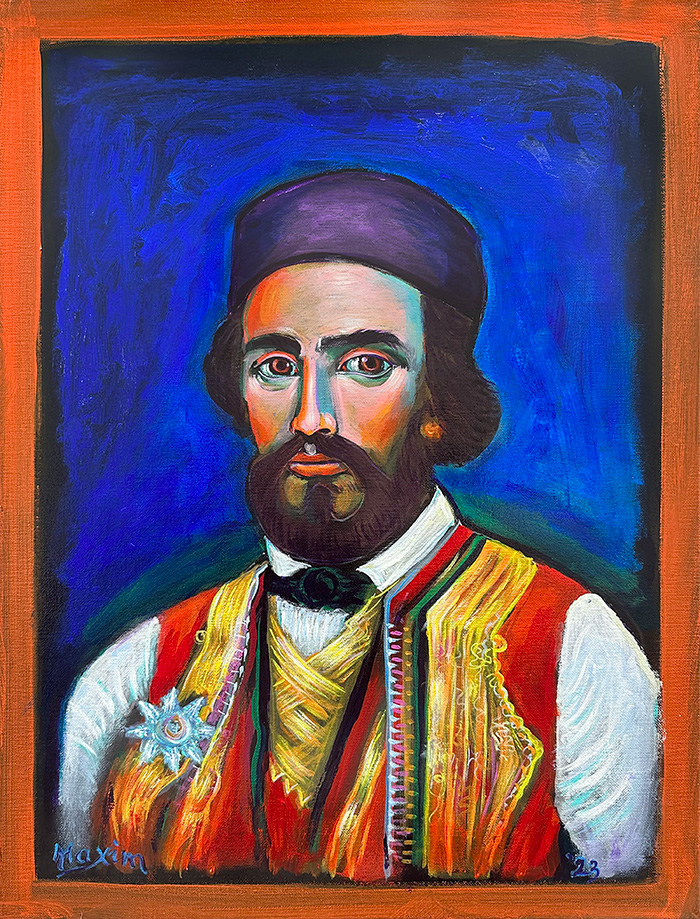
Njegoš is depicted not merely as the striking figure he undeniably is, but also as a symbol of Montenegrin leadership, adorned with his distinct insignia. Yet, beneath the emblematic heroism, there resides a heart brimming with sensitivity, contemplation, and compassion. The artist, Maxim, conveys these layers of complexity through the portrayal of Njegoš’s eyes. They do not gleam with suspicion or fixate on tangible entities; instead, they veer slightly sideways, lost in expansive contemplation, exploring abstract dimensions. They emit emotions and navigate through intricate queries, discarding the superficial and delving profoundly into the enigma of existence.
These eyes are not caught in passive abstraction but are actively engaged in the realm of vision, perceiving the unseen and the incomprehensible, tapping into the unspoken and unseen facets of existence, akin to discovering the unseen side of the moon. They seem to anticipate the unforeseen, reflecting concern for the profound destinies of his people. Every element of this portrait echoes the unprecedented perceptiveness and sensitivity of the artist bishop.
Each rendition of him feels like a venture beyond established boundaries, a dance of colors, lines, landscapes, and human forms. It’s as if Maxim is enamored with every stroke and hue, pushing the boundaries of artistic expression. We might be witnessing the inception of an artistic journey, an ascent aiming to redefine the realms of high painting!
Fr. Stamatis Skliris
